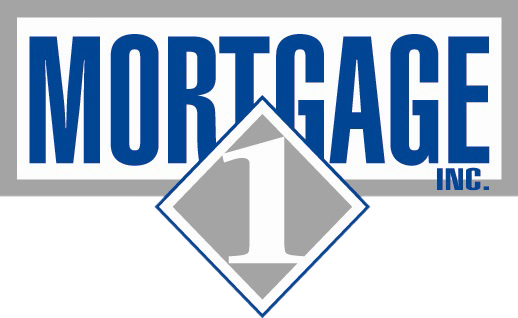
How to Get Preapproved for a Mortgage
January 18, 2023
Tips for Winterizing Your Home to Make It Warm and Cozy
February 2, 2023Getting a mortgage can be a daunting task, especially for first-time home buyers. The process requires research, paperwork, and understanding the various terms and conditions of the loan. With the right knowledge and guidance, you can make the process easier and get your home loan quickly.
In this article, we review the process for getting a mortgage. We look at:
- the different types of mortgages
- the documents required for a mortgage application
- the steps in the mortgage process
- how to choose the best mortgage lender
| Choose a Lender You Can Trust Mortgage 1 is the lender buyers trust most. Call 1-866-532-0550 or get preapproved today with our easy-to-use digital preapproval app. It takes as little as 15 minutes. |
Types of Mortgages
There are several types of mortgages available to borrows. The most common types are described below. All of these mortgage types are available from Mortgage 1.
- Fixed-rate mortgages: the interest rate remains the same for the entire term of the loan.
- Adjustable-rate mortgages (ARMs): the interest rate changes over time, based on an index.
- FHA loans: mortgages insured by the Federal Housing Administration, which may have more lenient credit and down payment requirements.
- VA loans: VA loans are mortgages guaranteed by the Department of Veterans Affairs, available to eligible veterans and service members.
- USDA loans: USDA loans are mortgages backed by the United States Department of Agriculture, available to buyers in rural areas.
- Jumbo loans: mortgages that exceed the conforming loan limit set by government-sponsored enterprises.
- Balloon mortgages: a short-term mortgage with a low interest rate, after which the remaining balance is due in one lump sum.
Steps in the Mortgage Process
The mortgage process typically involves the following steps:
- Pre-approval: You will fill out a mortgage application and provide the lender with your financial information, such as your income, assets, and credit score. The lender will then pre-approve you for a loan, which means they will tell you how much you can borrow and at what interest rate.
- Finding a property: Once you have pre-approval, you can start looking for a property to purchase.
- Applying for the loan: Once you have found a property, you will need to formally apply for the loan. This typically involves providing the lender with additional documentation, such as a sales contract and proof of insurance.
- Underwriting: Underwriting is when a lender will review your application and documentation to make sure you meet their lending criteria.
- Appraisal: The lender will order an appraisal of the property to ensure that it is worth the amount you are borrowing.
- Closing: Once the lender has approved your loan, you will need to attend a closing, where you will sign the loan documents and pay any closing costs.
- Funding: After closing, the lender will disburse the loan funds to the seller or to an escrow account to pay for the property.
- Post-closing: After the funds are disbursed, the lender will continue to service your loan, meaning that you will make payments to the lender each month to pay off the loan.
Documentation Required for a Mortgage
The documentation required for a mortgage may vary depending on the lender and the type of loan, but generally, the following documents will be required:
- Proof of income: This may include pay stubs, W-2 forms, tax returns, and/or bank statements to verify your income and employment history.
- Identification: You will need to provide a government-issued ID, such as a driver’s license or passport, to verify your identity.
- Asset information: You will need to provide documentation of your assets, such as bank statements or investment account statements, to verify that you have the funds for a down payment and closing costs.
- Credit history: You will need to provide information on your credit history, such as your credit report, to verify your creditworthiness.
- Property information: If you have already found a property, you will need to provide the lender with a sales contract and any other relevant property information, such as a property appraisal or a home inspection report.
- Self-employed documentation: If you are self-employed, you may be required to provide additional documentation, such as profit and loss statements and business tax returns.
- Additional documentation may be required depending on the type of loan you are applying for, such as a certificate of eligibility for a VA loan or proof of insurance for an FHA loan.
Tips for Choosing a Lender
When choosing a mortgage lender, it’s important to consider the following factors:
- Shop around: Compare rates and fees from multiple lenders to find the best deal.
- Check their reputation: Research the lender’s reputation by reading reviews from past customers and checking with the Better Business Bureau.
- Mortgage 1 has a 4.8 Google Review rating.
- Look for transparency: A good lender should be upfront about their rates and fees, and should clearly explain the terms of the loan.
- Consider the type of loan: Make sure the lender you choose offers the type of loan you are looking for, such as a fixed-rate mortgage or an FHA loan.
- Mortgage 1 offers all types of loans and specializes in helping first-time buyers with MSHDA MI Home Loan and other programs. We are Michigan’s leading MSHDA lender.
- Check their customer service: A lender with good customer service will be responsive to your needs and will be able to answer any questions you have.
- Compare the interest rate and APR: The annual percentage rate (APR) includes the interest rate as well as other fees and charges, so it gives you a more accurate picture of the total cost of the loan.
- Look for a lender who offers online application and digital document signing options, which can make the process more convenient and efficient.
- Mortgage 1 offers a full suite of digital tools, including Pro SNAP, Fast Pass, RON Closings and Your Mortgage Online, which is our personalized online portal.
- Consider their experience: A lender who has a lot of experience in the mortgage industry is likely to be more knowledgeable and better equipped to help you through the process.
- Mortgage 1 has been in business since 1994, is licensed in 12 states, and has helped more than 100,000 families get into the homes of their dreams.
- Are they local? Local lenders often provided better service than big national banks.
Make Mortgage 1 Your First Choice
Make Mortgage 1 your first choice for getting a mortgage. Our Pro SNAP application makes it fast and easy. Get preapproved in as little as 15 minutes. Get started today. Or call us at 1-866-532-0550.





